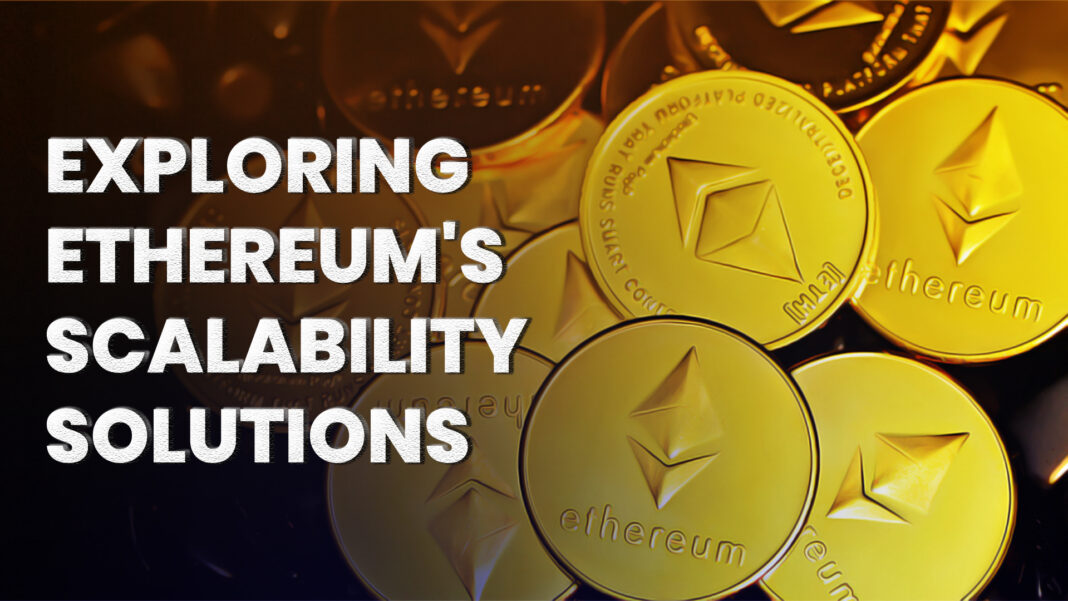- The crucial problem of scaling the Ethereum blockchain while preserving decentralization and security is addressed in the essay, which examines several approaches and difficulties involved in doing so.
- It investigates both unsatisfactory and promising methods of scaling, such as plasma chains and state channels, while exposing their shortcomings. It also digs into the idea of the ‘blockchain trilemma.’
Scalability has emerged as a crucial issue in the constantly changing world of blockchain technology, especially for networks like Ethereum that support a large number of decentralized applications (dApps) and handle a large volume of daily transactions.
However, it’s important to first examine the many approaches that have been taken into account in the search for blockchain scalability before diving into the intricacies of Ethereum 2.0’s sharding solution.
The Blockchain Conundrum
One must first comprehend the idea of the ‘blockchain trilemma,’ as put forth by Ethereum co-founder Vitalik Buterin, to comprehend the difficulties of scaling Ethereum. A blockchain network, according to this trilemma, may excel in just two of the three areas of decentralization, security, and scalability. Ethereum now performs well in security and decentralization but falls short in scalability. Any scaling solution needs to find a balance without sacrificing these fundamental qualities.
Unsatisfactory Scaling Ideas
One of the first suggestions for scaling the blockchain was to increase the block size. Although theoretically sound, this strategy has several drawbacks. Larger blocks increase latency, benefit owners of high-end technology, need more storage and complicate network synchronization. In the end, an enormous block size raises the possibility of centralization.
Another strategy involves shifting transactions to a lot of other currencies, which helps lighten the burden on the main network. Although this strategy increases throughput somewhat, it also reduces security because smaller cryptocurrencies are more vulnerable to attack.
The use of numerous cryptocurrencies is akin to merge mining, which is used by projects like Namecoin but makes use of the same miners and protocols. Better security is provided; however, because of higher mining power needs, centralization problems remain.
Promising But Limited Scaling Ideas
ZK-SNARKs and Mimblewimble are two recent advancements in cryptography that are intended to hasten node verification and increase transaction speeds. These solutions aren’t full scalability possibilities, despite their promise.
- Atomic Chains
A potentially effective but imperfect scaling option is plasma chains. These connected, semi-independent blockchains allow transactions to take place on the Ethereum main chain. By converting their Ether into plasma chain native tokens, users may lighten the burden on the mainnet. This method has the potential for dynamic scaling and security because of Ethereum’s inherent truth, but it has issues with large withdrawals and denial-of-service assaults.
- State Channels
Another partial solution is provided by state channels, such as the Raiden network on Ethereum or the Lightning network on Bitcoin. Using smart contracts, users may construct channels on the mainnet that allow off-chain transactions while maintaining the security of the mainnet. Transactions can also be facilitated by intermediaries, and their fees are subject to market competition. State channels provide nearly immediate transactions, which relieves mainchain congestion. But they are also vulnerable to denial-of-service assaults.
The Way Forward
The path Ethereum is on to scalability is complex. The primary feature of Ethereum 2.0, sharding, shows enormous potential for solving scalability without compromising security or decentralization. The simultaneous development of sharding, plasma chains, and state channels, which are complementary techniques, strives to give users flexible alternatives that may accommodate varied demands and preferences.
Conclusion
Ethereum is actively pursuing scalability, and many approaches are being taken into account. The blockchain community understands the value of scaling without sacrificing security and decentralization and continues research and development work to achieve this difficult balance. Plasma chains and state channels provide helpful complementary strategies to improve the network’s effectiveness and usability, while Ethereum 2.0, with its implementation of sharding, marks an important milestone in this path. It’s crucial to be alert and adaptable to new ideas as blockchain technology continues to develop to advance the sector.


